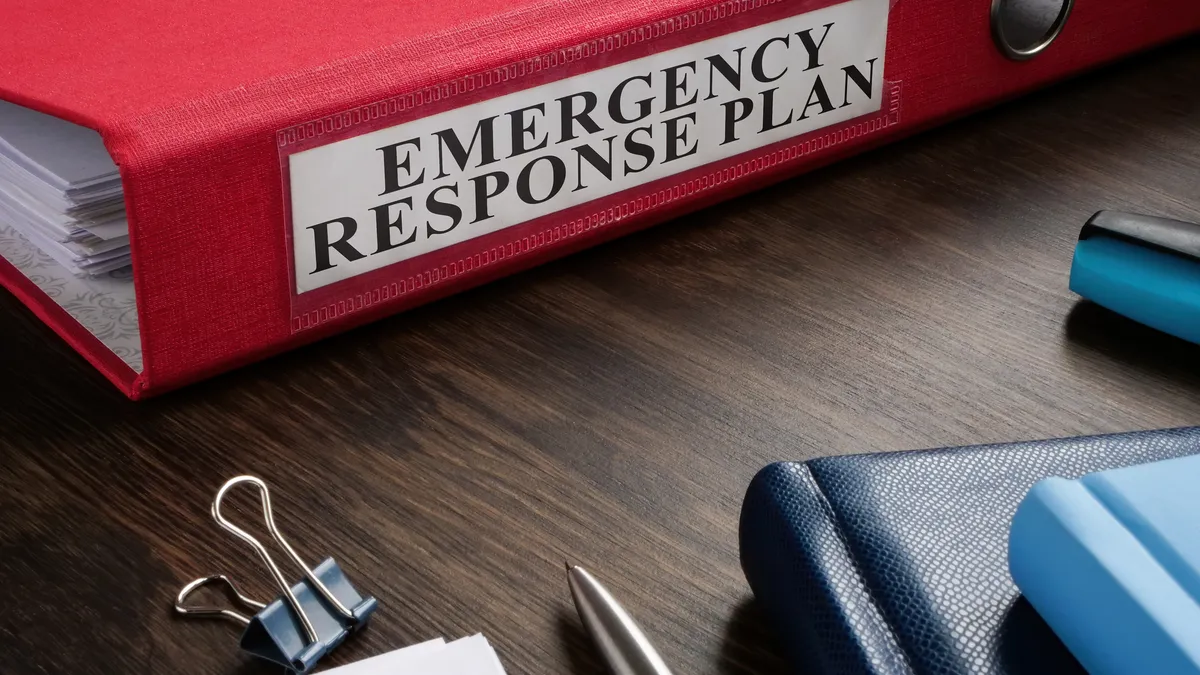Dive Brief:
- The split incentive gap — where landlords and developers foot the bill for building energy efficiency upgrades, while tenants benefit from lower energy costs — remains a key barrier to decarbonizing buildings, according to a new road map from the Sustainable Markets Initiative’s Sustainable Buildings Transition Hub.
- The road map outlines strategies to bridge this gap, emphasizing three areas: legislation; clear, enforceable emission reduction targets; and green leases that align the interests of both owners and tenants.
- Laws such as New York City’s Local Law 97 and Boston’s Building Emissions Reduction and Disclosure Ordinance signal a shift toward stricter building performance standards, which are reshaping operational strategies for commercial buildings. These laws, along with tax breaks for deep retrofits, are reshaping commercial building strategies and aligning U.S. policies with global decarbonization trends, the report says.
Dive Insight:
Split incentives are among “the most commonly recognised issues when it comes to accelerating progress in the global real estate sector," George Oliver, chairman and CEO of Johnson Controls and chair of the Sustainable Markets Initiative’s Sustainable Buildings Transition Hub, said in a Sept. 26 news release.
Targeting public and private sector organizations, the report outlines challenges, solutions and best practices for addressing the split incentive gap via legislation, target-setting and green leases.
Legislation
A transparent, performance-based ratings system for commercial buildings could help the industry move toward decarbonization by addressing operational inefficiencies. This would involve collecting and comparing data on energy and water use, as well as on other sustainability efforts like recycling. Furthermore, PBRs could demonstrate a link between improved operational efficiency and increased asset value. For instance, buildings that operate more efficiently can attract higher rents and that could potentially address the split incentive gap, the road map says.
However, jurisdictions moving to implement PBRs for buildings must avoid making the systems overly complex and consider how they will interact with existing regulations, like those that set minimum energy efficiency standards, while providing relevant real-time data on energy efficiency that can facilitate transparent reporting on decarbonization progress, SMI cautions.
Additionally, incentivizing the use of ready and proven decarbonization technologies and facilitating a broader collaboration between building owners and municipalities looking to address split incentives, such as by incentivizing the reuse of waste heat, can help lower emissions and boost energy efficiency, the road map says.
Target-setting
The road map underscores the need for a globally standardized definition of net zero to simplify target-setting for building owners. The International Organization for Standardization’s Net Zero Guidelines, which are being formalized into a full ISO standard, aim to provide clarity across sectors, formalizing a single target of net-zero greenhouse gas emissions by 2050.
Decarbonization efforts also require a clear understanding of real-time operational carbon performance in buildings, supported by a comprehensive carbon measurement standard, the road map says. A new PBR system must define carbon efficiency clearly, with standardized key performance indicators to enhance trust and clarity. An informal working group, led by the Institutional Investors Group on Climate Change and the Royal Institution of Chartered Surveyors, aims to release globally adaptable climate transition KPIs by early 2025 to boost investment in sustainable practices.
Green leases
The potential for green leases identified in SMI’s road map echoes the growing momentum of energy consumption and utility cost reduction measures through these leasing practices highlighted in a recent Cushman & Wakefield report.
The road map notes that green leases can “accommodate an equitable distribution of risk and reward when it comes to investments in decarbonization.” An effective green lease would include a carbon reduction goal that landlords and tenants can agree on. Other key themes, the road map says, include collaborative target-setting and data-driven tracking of environmental performance.
Green leases should also allow for requirements in the local jurisdiction, the report says. It lists several factors such leases could address, such as office vacancies or renewable energy use, that would help boost operational efficiency.















